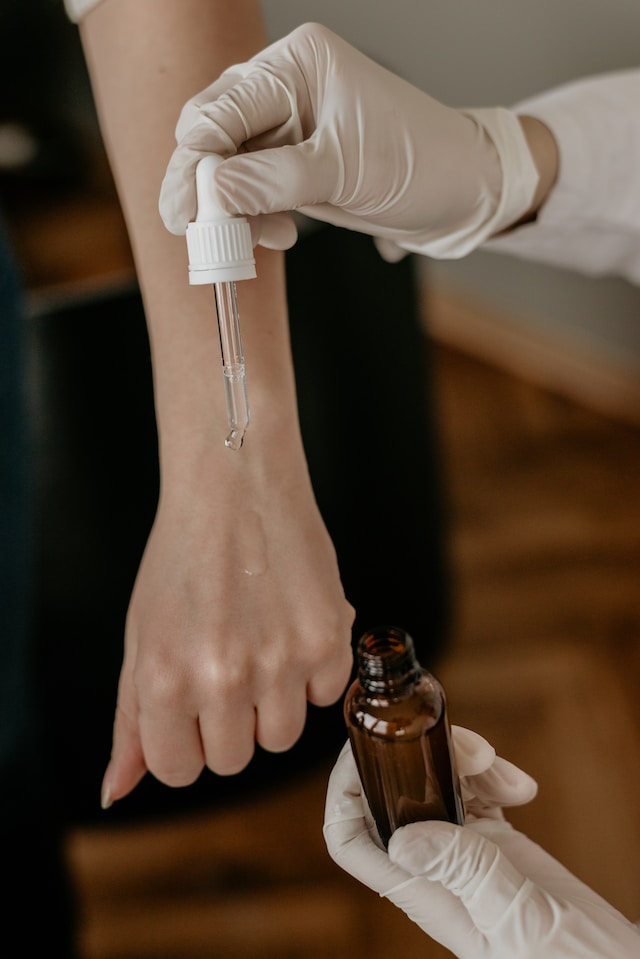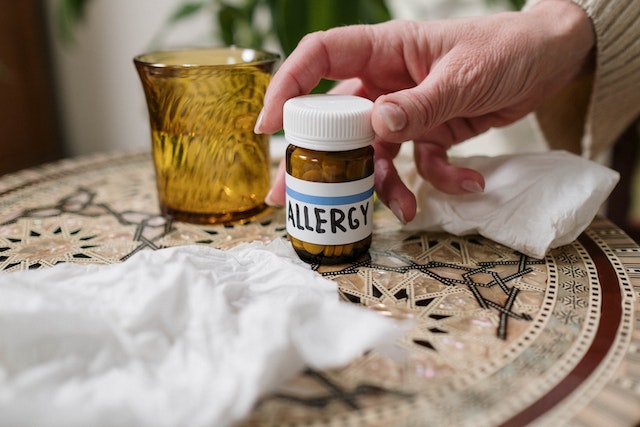Monthly Archives: February 2023
Best Allergy Testing: What to Expect and How it Can Help
How do you get the best allergy testing? Allergies can be a frustrating and sometimes even life-threatening condition for many people. The good news is that with proper diagnosis and treatment, it is possible to manage and reduce symptoms. Allergy testing is a crucial part of this process, as it helps to identify specific allergens that may be causing an individual’s allergic reactions. In this blog post, we will explore the importance of this type of testing and what patients can expect during the process.

What is Allergy Testing?
Testing for allergies is a medical procedure that helps to identify the specific allergens that trigger an individual’s allergic reactions. There are several different types of tests, including skin tests, blood tests, and patch tests. Testing for allergies can be performed for a wide range of allergens, including pollen, dust mites, pet dander, and certain foods.
Why is Allergy Testing Important?
Allergy testing is important because it helps to identify the specific allergens that are causing an individual’s allergic reactions. Once these allergens are identified, patients can take steps to avoid exposure to them and reduce their risk of allergic reactions. This type of testing can also help to inform treatment plans, including the use of medications and immunotherapy.
What to Expect During Allergy Testing
The specific procedure for allergy testing may vary depending on the type of test being performed. However, there are some general things that patients can expect during the process.
Types of Allergy Tests
 Skin tests
Skin tests
Skin tests are one of the most common types of allergy testing. During a skin test, a small amount of an allergen is applied to the skin, usually on the back or forearm. The skin is then pricked or scratched to allow the allergen to enter the skin. If the patient is allergic to the specific allergen, they will develop a raised bump or redness at the site of the test.
Blood tests
Blood tests are another common type of allergy testing. During a blood test, a small sample of blood is drawn and sent to a laboratory for analysis. The laboratory will test the blood for specific antibodies that are associated with allergic reactions.
Patch tests
Patch tests are typically used to identify allergies to substances that come into contact with the skin, such as certain metals, fragrances, and preservatives. During a patch test, small patches containing potential allergens are applied to the skin, usually on the back. The patches are left in place for 48 hours before being removed. If the patient is allergic to one of the substances, they will develop a reaction at the site of the patch.
Preparing for the test
Patients may need to stop taking certain medications, such as antihistamines, in the days leading up to allergy testing. This is because these medications can interfere with the results of the tests. Patients should also avoid wearing tight clothing or jewelry that may irritate the skin on the day of the test.
Allergy Testing: Conclusion
In conclusion, allergy testing is an important part of managing and treating allergies. By identifying specific allergens, patients can take steps to avoid exposure and reduce their risk of allergic reactions. If you are experiencing symptoms of allergies, it is important to speak with an allergist and consider undergoing testing.
If you are in the New York City area and looking for a qualified allergist, Boyan Hadjiev MD, also known as “Dr. Sneeze,” can help. Dr. Hadjiev offers a range of allergy testing and treatment options.
Allergy, Asthma and Sinusitis P.C
30 East 40th Street (Btwn Madison and Park)
Suite 1200
New York, NY 10016
212-319-5282
Food Allergies: Common Triggers and Effective Treatment Options in 2023-2024
Food allergies are a growing concern in the United States, with an estimated 32 million Americans affected. If left untreated, food allergies can cause serious health problems, including anaphylaxis. That’s why it’s important to seek medical attention if you suspect that you have a food allergy. Boyan Hadjiev MD, an allergist located in New York City, can help you identify the triggers of your food allergies and provide effective treatment options. In this blog post, we’ll discuss common food allergy triggers and how Dr. Hadjiev can help you manage them.

Common Food Allergy Triggers
The most common food allergies are to peanuts, tree nuts, milk, eggs, soy, wheat, fish, and shellfish. However, it is possible to be allergic to any food. Symptoms of a food allergy can range from mild to severe and can include hives, swelling, abdominal pain, vomiting, diarrhea, and difficulty breathing.
Peanuts and Tree Nuts
Peanuts and tree nuts are among the most common food allergens. People who are allergic to peanuts may also be allergic to tree nuts, such as almonds, walnuts, and cashews. Symptoms of a peanut or tree nut allergy can range from mild to severe and can include anaphylaxis, a life-threatening reaction.

Milk, Eggs, and Soy
Milk, eggs, and soy are also common food allergens. Symptoms of a milk allergy can range from mild to severe and can include hives, abdominal pain, and vomiting. Symptoms of an egg allergy can include hives, abdominal pain, and difficulty breathing. Soy allergy symptoms can range from mild to severe and can include hives, abdominal pain, and anaphylaxis.
Fish, Shellfish & Wheat
Wheat, fish, and shellfish are other common food allergens. Wheat allergy symptoms can range from mild to severe and can include hives, abdominal pain, and anaphylaxis. Fish allergy symptoms can include hives, swelling, and difficulty breathing. Shellfish allergy symptoms can range from mild to severe and can include hives, abdominal pain, and anaphylaxis.
Effective Treatment Options
The most effective treatment for food allergies is to avoid the foods that trigger your symptoms. This can be challenging, especially if the food is a common ingredient in many foods. Dr. Hadjiev can help you identify the specific foods that trigger your allergies and provide guidance on how to avoid them.
In some cases, Dr. Hadjiev may recommend immunotherapy, which involves gradually exposing you to small amounts of the allergen over time to build up your tolerance. This can be done through allergy shots or sublingual immunotherapy (SLIT), which involves placing a tablet under your tongue.

Emergency Treatment
If you experience a severe allergic reaction, such as anaphylaxis, you should seek emergency medical attention right away. Dr. Hadjiev can provide you with an emergency action plan and prescribe an epinephrine auto-injector, which can be used to treat anaphylaxis.
Food Allergies – Triggers and Effective Treatment Options in 2023: Conclusion
Food allergies can be life-threatening, but with the help of Boyan Hadjiev MD, you can identify the specific triggers of your allergies and learn how to manage them. If you suspect that you have a food allergy, don’t hesitate to seek medical attention.
Contact Dr. Hadjiev at Allergy, Asthma and Sinusitis P.C. by calling 212-319-5282 or visiting his website at https://drsneeze.com.
Serving all of New York City and the Tri State Area including Zip Codes: Top Allergist NYC Midtown, Chelsea and Clinton: 10001, 10011, 10018, 10019, 10020, 10036 | Gramercy Park and Murray Hill: 10010, 10016, 10017, 10022 | Greenwich Village and Soho: 10012, 10013, 10014 | Lower Manhattan: 10004, 10005, 10006, 10007, 10038, 10280 | Lower East Side: 10002, 10003, 10009 | Upper East Side: 10021, 10028, 10044, 10128 | Upper West Side: 10023, 10024, 10025
